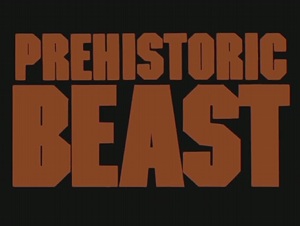|
Microsoft Dinosaurs
''Microsoft Dinosaurs'' is an educational interactive CD-Rom developed by Microsoft, themed around dinosaurs. Production Microsoft invested in access to the entire library of writing and images of reference publishing house Dorling Kindersley. They used it to create content for the Microsoft Home software line, including ''Microsoft Dinosaurs''. Gameplay The game contains 400MB of dinosaur-related information, including full-motion video, audio, and a gallery of scanned artwork. The main program features 1000 illustrations, 200 hypertext articles, and 800 pop-up windows. Players can explore the content in four different ways: Atlas, Timeline, Families, and Index. There is also a guided tour, hosted by "Dino" Don Lessem. The game contains sequences featuring dinosaurs feeding, fighting and breeding, which had previously been broadcast in an American television series put out by the Public Broadcasting Service, and the Phil Tippett short ''Prehistoric Beast''. Critical receptio ... [...More Info...] [...Related Items...] OR: [Wikipedia] [Google] [Baidu] |
Windows 3
Windows 3.x means either of, or all of the following versions of Microsoft Windows: * Windows 3.0 * Windows 3.1x Windows 3.1 is a major release of Microsoft Windows. It was released to manufacturing on April 6, 1992, as a successor to Windows 3.0. Like its predecessors, the Windows 3.1 series ran as a shell on top of MS-DOS. Codenamed Janus, Windows 3 ... Windows NT * Windows NT 3.x 3.x {{Short pages monitor ... [...More Info...] [...Related Items...] OR: [Wikipedia] [Google] [Baidu] |
Public Broadcasting Service
The Public Broadcasting Service (PBS) is an American public broadcaster and non-commercial, free-to-air television network based in Arlington, Virginia. PBS is a publicly funded nonprofit organization and the most prominent provider of educational programming to public television stations in the United States, distributing shows such as ''Frontline'', '' Nova'', ''PBS NewsHour'', ''Sesame Street'', and ''This Old House''. PBS is funded by a combination of member station dues, the Corporation for Public Broadcasting, pledge drives, and donations from both private foundations and individual citizens. All proposed funding for programming is subject to a set of standards to ensure the program is free of influence from the funding source. PBS has over 350 member television stations, many owned by educational institutions, nonprofit groups both independent or affiliated with one particular local public school district or collegiate educational institution, or entities owned by or r ... [...More Info...] [...Related Items...] OR: [Wikipedia] [Google] [Baidu] |
The Seattle Times
''The Seattle Times'' is a daily newspaper serving Seattle, Washington, United States. It was founded in 1891 and has been owned by the Blethen family since 1896. ''The Seattle Times'' has the largest circulation of any newspaper in Washington (state), Washington state and the Pacific Northwest region. The Seattle Times Company, which is owned by the Blethen family, holds 50.5% of the paper. McClatchy company owns 49.5% of the paper. ''The Seattle Times'' had a longstanding rivalry with the ''Seattle Post-Intelligencer'' newspaper until the latter ceased publication in 2009. Copies are sold at $2 daily in King & adjacent counties (except Island, Thurston & other WA counties, $2.5) or $3 Sundays/Thanksgiving Day (except Island, Thurston & other WA counties, $4). Prices are higher outside Washington state. History ''The Seattle Times'' originated as the ''Seattle Press-Times'', a four-page newspaper founded in 1891 with a daily Newspaper circulation, circulation of 3,500, which M ... [...More Info...] [...Related Items...] OR: [Wikipedia] [Google] [Baidu] |
PC Magazine
''PC Magazine'' (shortened as ''PCMag'') is an American computer magazine published by Ziff Davis. A print edition was published from 1982 to January 2009. Publication of online editions started in late 1994 and have continued to the present day. Overview ''PC Magazine'' provides reviews and previews of the latest hardware and software for the information technology professional. Articles are written by leading experts including John C. Dvorak, whose regular column and "Inside Track" feature were among the magazine's most popular attractions. Other regular departments include columns by long-time editor-in-chief Michael J. Miller ("Forward Thinking"), Bill Machrone, and Jim Louderback, as well as: * "First Looks" (a collection of reviews of newly released products) * "Pipeline" (a collection of short articles and snippets on computer-industry developments) * "Solutions" (which includes various how-to articles) * "User-to-User" (a section in which the magazine's experts answ ... [...More Info...] [...Related Items...] OR: [Wikipedia] [Google] [Baidu] |
Compute!
''Compute!'' (), often stylized as ''COMPUTE!'', was an American home computer magazine that was published from 1979 to 1994. Its origins can be traced to 1978 in Len Lindsay's ''PET Gazette'', one of the first magazines for the Commodore PET computer. In its 1980s heyday ''Compute!'' covered all major platforms, and several single-platform spinoffs of the magazine were launched. The most successful of these was ''Compute!'s Gazette'', which catered to VIC-20 and Commodore 64 computer users. History ''Compute!''s original goal was to write about and publish programs for all of the computers that used some version of the MOS Technology 6502 CPU. It started out in 1979 with the Commodore PET, VIC-20, Atari 400/800, Apple II+, and some 6502-based computers one could build from kits, such as the Rockwell AIM 65, the KIM-1 by MOS Technology, and others from companies such as Ohio Scientific. Coverage of the kit computers and the Commodore PET were eventually dropped. The platforms t ... [...More Info...] [...Related Items...] OR: [Wikipedia] [Google] [Baidu] |
Prehistoric Beast
''Prehistoric Beast'' is a ten-minute-long experimental animated film conceived, supervised and directed by Phil Tippett in 1984. This sequence is the first film produced by the Tippett Studio, founded by Tippett. Made with the go motion animation technique, scenes from ''Prehistoric Beast'' were included in the 1985 full-length documentary '' Dinosaur!'', first aired on CBS in the United States on November 5, 1985. Content Set 65 million years ago in what is now the Canadian province of Alberta, this short film depicts the chase and predation of a ''Monoclonius'' (also known as ''Centrosaurus'' --the synonym name-- see below) by a ''Tyrannosaurus rex'' (or a closely related genus; see below). The short opens with a tracking shot in the middle of a forest at night: the ''Tyrannosaurus rex'' is busy eating and finishing an '' Edmontosaurus'' carcass. The next morning, a herd of ''Monoclonius'' is seen grazing. One member wanders into the forest to find more food. It finds a field ... [...More Info...] [...Related Items...] OR: [Wikipedia] [Google] [Baidu] |
Phil Tippett
Phil Tippett (born September 27, 1951) is an American movie director and Oscar and Emmy Award-winning visual effects supervisor and producer, who specializes in creature design, stop-motion and computerized character animation. Over his career, he has assisted ILM and DreamWorks, and in 1984 formed his own company, Tippett Studio. His work has appeared in movies such as the original '' Star Wars'' trilogy, '' Jurassic Park'', and '' RoboCop''. In 2021, he released his long-gestating stop-motion film ''Mad God'', which was funded through Kickstarter and distributed by Shudder. Early life Tippett was born in Berkeley, California. When he was seven, Tippett saw Ray Harryhausen's special effects classic, ''The 7th Voyage of Sinbad'', and his life's direction was set. Tippett completed a bachelor's degree in art at the University of California, Irvine, and went to work at the animation studio Cascade Pictures in Los Angeles. Career Stop motion In 1975, while still working at C ... [...More Info...] [...Related Items...] OR: [Wikipedia] [Google] [Baidu] |
Microsoft Home
Microsoft Home was a line of software applications and personal hardware products published by Microsoft. Microsoft Home software titles first appeared in the middle of 1993. These applications were designed to bring multimedia to Microsoft Windows and Macintosh personal computers. With more than 60 products available under the Microsoft Home brand by 1994, the company's push into the consumer market took off. Microsoft Plus!, an add-on enhancement package for Windows, continued until the Windows XP era. The range of home software catered for many different consumer interests from gaming with Microsoft Arcade and Entertainment Packs to reference titles such as Microsoft Encarta, Bookshelf and Cinemania. Shortly after the release of Microsoft Windows 95, the company began to reduce the price of Microsoft Home products and by the rise of the World Wide Web by 1998, Microsoft began to phase out the line of software. Titles Microsoft Home produced software for all different home us ... [...More Info...] [...Related Items...] OR: [Wikipedia] [Google] [Baidu] |
System 6
System 6 (or System Software 6) is a graphical user interface-based operating system for Macintosh computers, made by Apple Computer It was released in 1988, and is part of the classic Mac OS series. It is a monolithic operating system, with cooperative multitasking based on an improved MultiFinder. The boxed version cost , and it was included with all new Macintosh computers until 1991, when it was succeeded by System 7. Overview MacroMaker The MacroMaker utility was introduced in System 6. It records mouse and keyboard input as macros, and has a unique user interface intended to look and act like a tape recorder. MacroMaker was criticized for its lack of features when compared to Microsoft's AutoMac III, which was already available commercially. As MacroMaker records only the locations of mouse-clicks inside windows and not what is being clicked on or exactly when, it can not be used to automate actions in more sophisticated programs. The pre-recorded clicks miss buttons if th ... [...More Info...] [...Related Items...] OR: [Wikipedia] [Google] [Baidu] |
Dorling Kindersley
Dorling Kindersley Limited (branded as DK) is a British multinational publishing company specialising in illustrated reference books for adults and children in 63 languages. It is part of Penguin Random House, a subsidiary of German media conglomerate Bertelsmann. Established in 1974, DK publishes a range of titles in genres including travel (including DK Eyewitness travel), history, geography, science, space, nature, sports, gardening, cookery and parenting. The worldwide co-CEOs of DK is Paul Kelly and Rebecca Smart. DK has offices in New York, Melbourne, London, Munich, New Delhi, Toronto, Madrid, Beijing, and Jiangmen. DK works with licensing partners such as Disney, LEGO, DC Comics, the Royal Horticultural Society, MasterChef, and the Smithsonian Institution. DK has commissioned Mary Berry, Monty Don, Robert Winston, Huw Richards, and Steve Mould for a range of books. History DK was founded in 1974 by Christopher Dorling and Peter Kindersley in London as a book ... [...More Info...] [...Related Items...] OR: [Wikipedia] [Google] [Baidu] |
Dinosaurs
Dinosaurs are a diverse group of reptiles of the clade Dinosauria. They first appeared during the Triassic period, between 243 and 233.23 million years ago (mya), although the exact origin and timing of the evolution of dinosaurs is the subject of active research. They became the dominant terrestrial vertebrates after the Triassic–Jurassic extinction event 201.3 mya; their dominance continued throughout the Jurassic and Cretaceous periods. The fossil record shows that birds are feathered dinosaurs, having evolved from earlier theropods during the Late Jurassic epoch, and are the only dinosaur lineage known to have survived the Cretaceous–Paleogene extinction event approximately 66 mya. Dinosaurs can therefore be divided into avian dinosaurs—birds—and the extinct non-avian dinosaurs, which are all dinosaurs other than birds. Dinosaurs are varied from taxonomic, morphological and ecological standpoints. Birds, at over 10,700 living species, are among ... [...More Info...] [...Related Items...] OR: [Wikipedia] [Google] [Baidu] |

.jpg)

